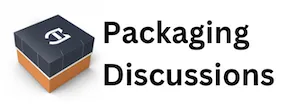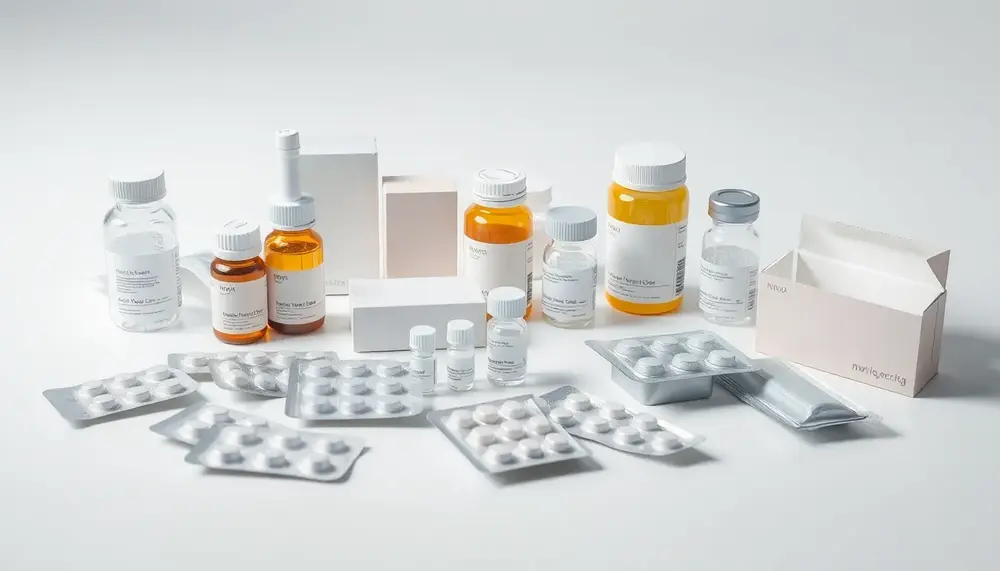Table of Contents:
Key Drivers Shaping Pharmaceutical Packaging Innovation
Key Drivers Shaping Pharmaceutical Packaging Innovation
What’s really pushing pharmaceutical packaging forward right now? Well, it’s not just one thing—it’s a cocktail of urgent needs, regulatory shake-ups, and tech breakthroughs. First off, the explosion of biologics and specialty medicines has made old-school packaging almost obsolete. These new therapies demand ultra-protective, often temperature-controlled environments, so packaging developers are scrambling to keep up with requirements that didn’t even exist a decade ago.
Meanwhile, the regulatory landscape is shifting at a dizzying pace. Agencies like the FDA and EMA are introducing stricter serialization and traceability mandates, especially for high-risk drugs. Companies that can’t guarantee end-to-end product integrity? They’re out of the game, simple as that. This pressure has forced a wave of digitalization—think real-time tracking, tamper-evident features, and unique identifiers on every pack.
Another huge driver: patient-centricity. It’s not just a buzzword. With the rise of self-administered therapies and an aging population, packaging has to be both secure and genuinely user-friendly. That means innovations like tactile indicators for the visually impaired, single-dose blisters for better adherence, and intuitive opening mechanisms that don’t require an engineering degree to use.
And let’s not forget sustainability. Environmental regulations and consumer demand are pushing the industry to ditch traditional plastics in favor of recyclable, biodegradable, or even compostable materials. But here’s the kicker: these green solutions can’t compromise drug safety or shelf life, so the R&D race is on to find materials that tick every box.
Lastly, global supply chain complexity is turning up the heat. As pharma companies expand into emerging markets, packaging must withstand diverse climates, longer transit times, and sometimes, less-than-ideal storage conditions. It’s a balancing act—one that’s fueling a constant stream of innovation, from shock-absorbing cartons to humidity-resistant seals.
Modern Packaging Processes: Bridging Compliance and Performance
Modern Packaging Processes: Bridging Compliance and Performance
Today's pharmaceutical packaging processes are no longer just about putting pills in a box. The real art lies in seamlessly integrating compliance with high-level performance, and—let’s be honest—this is where things get interesting. Regulatory authorities demand airtight documentation and validation at every step, but that doesn’t mean innovation takes a back seat. Quite the opposite, actually.
Automated packaging lines now use advanced vision systems and inline sensors to check fill levels, label accuracy, and even micro-defects in real time. This digital oversight isn’t just for show; it generates audit-ready data trails that satisfy even the strictest regulatory audits. At the same time, these systems can adapt on the fly—switching between packaging formats or adjusting for batch-specific requirements without lengthy downtime.
- Rapid Prototyping: 3D printing and digital twins allow teams to test new packaging concepts in days, not months. This means faster adaptation to new drug formulations or market demands.
- Integrated Data Management: Packaging lines now connect directly to enterprise resource planning (ERP) and manufacturing execution systems (MES), ensuring every package is traceable from production to patient.
- Automated Quality Control: Machine learning algorithms spot anomalies that human inspectors might miss, reducing recalls and boosting confidence in product safety.
What’s really clever is how these processes support both compliance and efficiency. By automating documentation and quality checks, companies free up skilled staff for higher-value tasks. Plus, with flexible line setups, they can handle smaller, personalized batches—crucial for modern therapies—without sacrificing speed or accuracy.
In short, the latest packaging processes don’t just tick regulatory boxes; they actively drive performance, flexibility, and reliability in a world where every second and every detail counts.
Pros and Cons of Modern Innovations in Pharmaceutical Packaging
| Pros | Cons |
|---|---|
| Enhanced patient safety through smart packaging (e.g., sensors, interactive features) | Higher development and production costs for advanced packaging solutions |
| Improved drug traceability and authentication with serialization, blockchain, and digital features | Increased complexity and integration challenges in global supply chains |
| Greater regulatory compliance via automated quality control and real-time data tracking | Need for constant adaptation to evolving international regulations |
| Sustainable and eco-friendly materials reduce environmental impact | Some green alternatives may not fully match conventional materials in barrier performance |
| Packaging tailored for sensitive therapies ensures product integrity (e.g., biologics, gene therapies) | Specialized packaging may result in less flexibility for high-volume, generic drugs |
| Advanced user-centric designs improve medication adherence and patient experience | Added features can complicate the recycling or disposal process |
Smart Packaging Technologies: Enhancing Traceability and Patient Safety
Smart Packaging Technologies: Enhancing Traceability and Patient Safety
Smart packaging is rewriting the rulebook for pharmaceutical safety and transparency. These technologies embed intelligence directly into packaging, transforming static containers into active participants in the healthcare journey. No more guessing if a medicine has been tampered with or stored incorrectly—smart solutions provide real-time answers.
- Embedded Sensors: Miniaturized sensors now monitor temperature, humidity, and even shock exposure. If a vial gets too warm during transit, the package can alert supply chain managers instantly, helping prevent compromised drugs from reaching patients.
- Interactive Features: NFC chips and QR codes connect patients and pharmacists to digital leaflets, video instructions, or authentication portals. This means up-to-date guidance and instant verification of product authenticity, all with a tap or scan.
- Dynamic Expiry Tracking: Some smart labels can update expiry dates based on actual storage conditions, not just fixed timelines. This dynamic approach reduces waste and ensures patients receive safe, effective medication.
- Adherence Monitoring: Packaging can now record when a dose is removed or remind patients to take their medication. This is a game-changer for chronic therapies, supporting better outcomes and reducing hospitalizations.
By combining digital intelligence with physical protection, smart packaging not only strengthens traceability but also builds a direct bridge to patient safety. The result? Fewer errors, faster recalls if needed, and a level of transparency that simply wasn’t possible before.
Sustainable Materials and Green Packaging Solutions
Sustainable Materials and Green Packaging Solutions
Pharmaceutical companies are now racing to find packaging that protects both medicines and the planet. The old reliance on single-use plastics is being challenged by innovative, eco-friendly alternatives that meet strict safety standards without leaving a heavy environmental footprint.
- Bio-based polymers: Derived from renewable sources like corn starch or sugarcane, these materials offer comparable barrier properties to conventional plastics but are compostable or biodegradable under industrial conditions.
- Recyclable mono-materials: Packaging made from a single type of plastic or paper simplifies recycling and reduces contamination in waste streams. Blister packs and bottles are increasingly designed with this in mind.
- Paper-based alternatives: High-strength, coated papers are replacing plastic trays and inserts, providing robust protection while supporting responsible forestry practices.
- Solvent-free inks and adhesives: These minimize harmful emissions during production and improve the recyclability of printed packaging components.
Regulatory bodies are also stepping in, encouraging or mandating eco-design principles. Companies that embrace these green solutions not only reduce their carbon footprint but often find cost savings in logistics and waste management. Ultimately, sustainable packaging is fast becoming a key differentiator—patients and healthcare providers are taking notice, and so are global markets.
Advanced Protective Designs for Sensitive and Novel Therapies
Advanced Protective Designs for Sensitive and Novel Therapies
As pharmaceutical pipelines fill with biologics, cell and gene therapies, and highly sensitive compounds, packaging must evolve beyond conventional barriers. These new therapies are often fragile, temperature-sensitive, and vulnerable to environmental stressors, so the packaging must deliver uncompromising protection at every stage.
- Multi-layer barrier systems: Advanced laminates combine polymers, foils, and specialty coatings to shield products from oxygen, moisture, and light. This approach extends shelf life and maintains potency, especially for injectables and biosimilars.
- Vacuum and modified atmosphere packaging: By removing or replacing air inside the package, these designs prevent oxidation and microbial growth—crucial for live vaccines and gene therapies.
- Pre-filled syringes and dual-chamber systems: For therapies that must be mixed immediately before use, dual-chamber syringes keep components separate until the moment of administration, reducing contamination risk and dosing errors.
- Shock-absorbing and vibration-dampening features: Sensitive biologics and personalized medicines are often shipped globally. Packaging with built-in cushioning or vibration-dampening materials helps prevent physical degradation during transit.
- UV-blocking and light-filtering technologies: Certain therapies degrade rapidly when exposed to light. Integrating UV-absorbing additives or tinted containers provides an invisible shield, ensuring drug stability from factory to patient.
These protective innovations are not just technical upgrades—they are essential enablers for the next generation of therapies. By safeguarding molecular integrity and simplifying handling, advanced packaging designs are helping bring breakthrough treatments safely to patients worldwide.
Combatting Counterfeiting: Next-Generation Security Features
Combatting Counterfeiting: Next-Generation Security Features
Pharmaceutical counterfeiting has become alarmingly sophisticated, prompting the industry to deploy a new arsenal of security features that go far beyond traditional holograms or serial numbers. These next-generation solutions are engineered to be both highly effective and extremely difficult to replicate, ensuring that only genuine medicines reach patients.
- Forensic Markers: Invisible chemical or molecular tags are embedded directly into packaging materials. Detectable only with specialized equipment, these markers provide a covert authentication layer that is virtually impossible for counterfeiters to duplicate.
- Blockchain-Based Verification: Each product’s journey is immutably recorded on a decentralized ledger. Pharmacies and regulators can instantly verify provenance, making it almost impossible for fake products to infiltrate legitimate supply chains.
- Microtext and Nanoprinting: Security elements printed at microscopic or even nanoscopic scales are undetectable to the naked eye but easily authenticated with magnification. This level of detail is out of reach for most counterfeit operations.
- Dynamic Security Codes: Variable, time-sensitive codes change with each production batch or even each individual package. These can be verified via secure apps, providing real-time confirmation of authenticity and instantly flagging suspicious activity.
- Optical Variable Devices (OVDs): Advanced visual effects—such as color-shifting inks or 3D micro-optics—create unique, instantly recognizable identifiers that are extremely challenging to reproduce without proprietary technology.
By layering these advanced security features, pharmaceutical companies are not just raising the bar—they are fundamentally changing the game in the fight against counterfeiting. The result is a robust, multi-dimensional defense that protects patients, preserves brand integrity, and supports regulatory compliance worldwide.
Packaging Solutions Tailored for Global Supply Chains
Packaging Solutions Tailored for Global Supply Chains
Pharmaceutical supply chains now stretch across continents, facing a maze of climate zones, regulatory frameworks, and logistical hurdles. To thrive in this environment, packaging solutions must be engineered for resilience, adaptability, and compliance on a global scale.
- Modular Packaging Systems: Flexible, modular designs allow for rapid adaptation to different regional requirements—whether it’s language localization, unique labeling standards, or specific import/export documentation. This modularity streamlines global launches and reduces lead times.
- Climate-Resilient Materials: Packaging is increasingly formulated to withstand extreme temperatures, humidity, and pressure changes encountered during international transit. These materials help ensure drug stability, even when cold chain infrastructure is inconsistent or unavailable.
- Automated Customs and Compliance Integration: Smart packaging can now embed digital data carriers that interface directly with customs and regulatory systems, accelerating border clearance and minimizing delays. This digital handshake reduces manual paperwork and the risk of costly errors.
- Geo-Tracking and Condition Monitoring: Integrated geo-location and environmental sensors enable real-time monitoring of shipments worldwide. If a deviation occurs—say, a package is delayed at a port or exposed to adverse conditions—stakeholders receive instant alerts, allowing for rapid intervention.
- Standardized Serialization Across Borders: Harmonized serialization protocols facilitate seamless tracking and authentication, even as products move between jurisdictions with differing regulations. This interoperability is vital for maintaining supply chain integrity and meeting global compliance mandates.
By addressing the unique demands of international distribution, these packaging innovations are not just logistical upgrades—they are strategic enablers, ensuring that critical medicines arrive safely, on time, and in full regulatory compliance, no matter where in the world they are needed.
Emerging Trends: The Future Landscape of Pharmaceutical Packaging
Emerging Trends: The Future Landscape of Pharmaceutical Packaging
Looking ahead, pharmaceutical packaging is set to break new ground with technologies and strategies that were barely imaginable a few years ago. The next wave is defined by a blend of personalization, automation, and connectivity, each transforming how medicines are delivered and experienced.
- Personalized Packaging for Precision Medicine: As therapies become tailored to individual genetic profiles, packaging will follow suit. Expect to see on-demand, patient-specific packs with unique dosing, labeling, and safety features, produced in real time using digital printing and flexible manufacturing.
- Integration with Digital Health Ecosystems: Packaging will increasingly interact with e-health records, mobile apps, and telemedicine platforms. This connectivity enables automatic medication reminders, remote adherence monitoring, and seamless data sharing between patients, providers, and pharmacists.
- Self-Destructing and Single-Use Security: To address concerns around drug diversion and misuse, new materials and mechanisms are being developed that cause packaging to degrade or become unusable after a single use or if tampered with, adding a powerful layer of protection for high-risk therapies.
- Augmented Reality (AR) for User Guidance: AR-enabled packaging will offer interactive instructions, visual demonstrations, and real-time support, especially valuable for complex self-administered treatments or for patients with limited health literacy.
- Decentralized Manufacturing and Localized Packaging: Advances in compact, modular production lines will allow pharmaceutical companies to package medicines closer to the point of care. This reduces lead times, enhances supply chain resilience, and supports rapid response to regional health crises.
These trends signal a future where pharmaceutical packaging is not just a container, but an active, intelligent interface—shaping the patient experience, strengthening safety, and redefining what’s possible in medicine delivery.
FAQ on Innovations in Pharmaceutical Packaging
What are the main drivers of recent innovations in pharmaceutical packaging?
Key innovation drivers include the emergence of biologics and specialty medicines, stricter global regulations, a growing focus on patient-centricity, sustainability demands, and the complexities of global pharmaceutical supply chains.
How are smart packaging technologies improving patient safety and traceability?
Smart packaging integrates sensors, QR codes, and NFC chips to monitor storage conditions, support authentication, track medication use, and provide digital access to up-to-date product information, enhancing both traceability and patient safety.
What sustainable materials are being adopted in pharmaceutical packaging?
The industry is adopting bio-based polymers, recyclable mono-materials, paper-based alternatives, and solvent-free inks and adhesives—offering solid protection for medicines while reducing environmental impact and supporting circular economy principles.
How is packaging being adapted for sensitive biologics and novel therapies?
Advances include multi-layer barrier systems, vacuum and modified atmosphere packaging, pre-filled and dual-chamber syringes, shock-absorbing materials, and light-filtering features, all designed to protect products that are sensitive to environmental exposure and handling.
What are the latest anti-counterfeiting measures in pharmaceutical packaging?
Modern anti-counterfeiting measures include forensic chemical markers, blockchain-based verification, microtext and nanoprinting, dynamic security codes, and advanced optical variable devices to combat increasingly sophisticated pharmaceutical counterfeiting.






